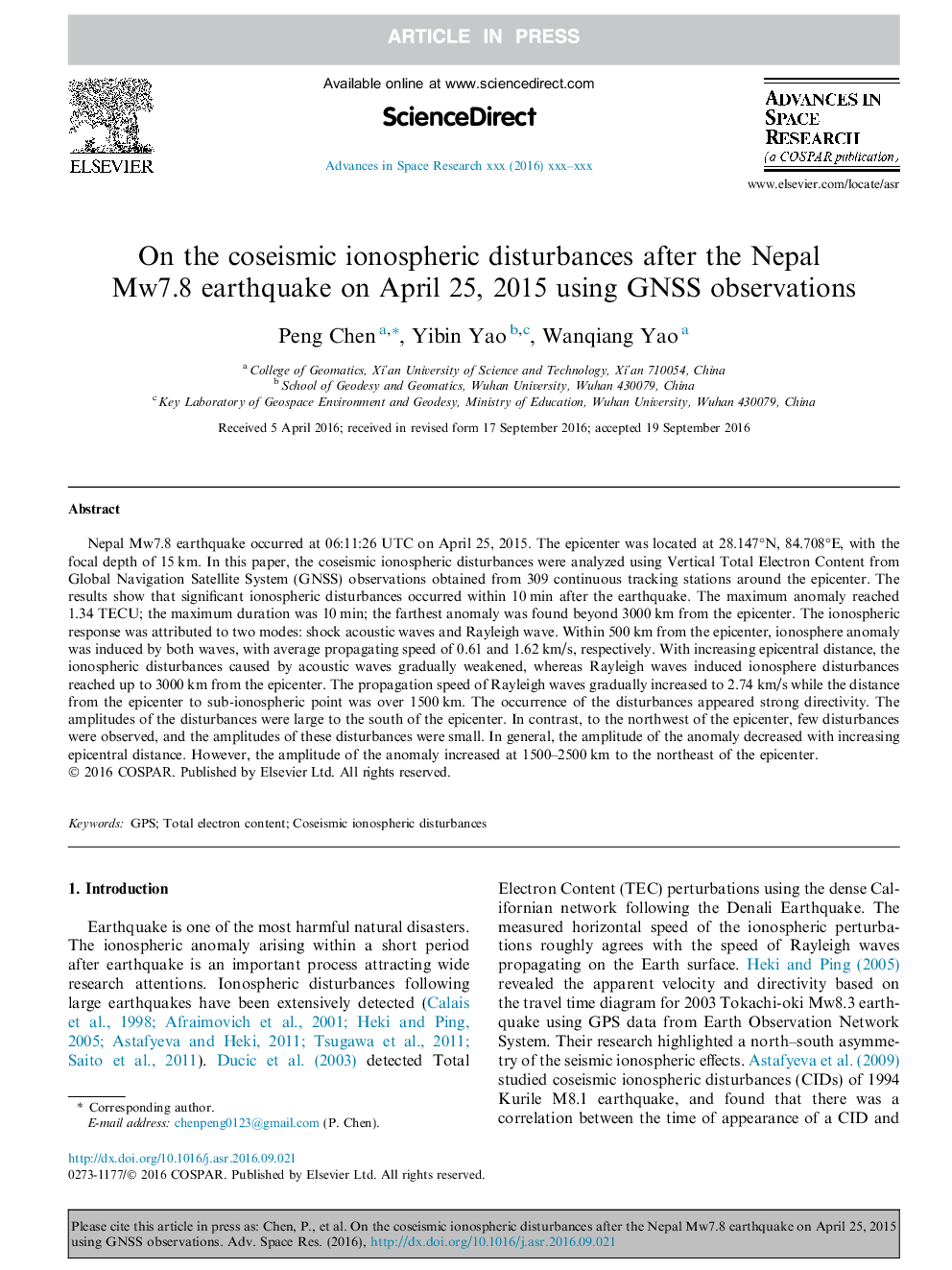| کد مقاله | کد نشریه | سال انتشار | مقاله انگلیسی | نسخه تمام متن |
|---|---|---|---|---|
| 5486090 | 1399448 | 2017 | 11 صفحه PDF | دانلود رایگان |
عنوان انگلیسی مقاله ISI
On the coseismic ionospheric disturbances after the Nepal Mw7.8 earthquake on April 25, 2015 using GNSS observations
دانلود مقاله + سفارش ترجمه
دانلود مقاله ISI انگلیسی
رایگان برای ایرانیان
موضوعات مرتبط
مهندسی و علوم پایه
علوم زمین و سیارات
علوم فضا و نجوم
پیش نمایش صفحه اول مقاله

چکیده انگلیسی
Nepal Mw7.8 earthquake occurred at 06:11:26 UTC on April 25, 2015. The epicenter was located at 28.147°N, 84.708°E, with the focal depth of 15 km. In this paper, the coseismic ionospheric disturbances were analyzed using Vertical Total Electron Content from Global Navigation Satellite System (GNSS) observations obtained from 309 continuous tracking stations around the epicenter. The results show that significant ionospheric disturbances occurred within 10 min after the earthquake. The maximum anomaly reached 1.34 TECU; the maximum duration was 10 min; the farthest anomaly was found beyond 3000 km from the epicenter. The ionospheric response was attributed to two modes: shock acoustic waves and Rayleigh wave. Within 500 km from the epicenter, ionosphere anomaly was induced by both waves, with average propagating speed of 0.61 and 1.62 km/s, respectively. With increasing epicentral distance, the ionospheric disturbances caused by acoustic waves gradually weakened, whereas Rayleigh waves induced ionosphere disturbances reached up to 3000 km from the epicenter. The propagation speed of Rayleigh waves gradually increased to 2.74 km/s while the distance from the epicenter to sub-ionospheric point was over 1500 km. The occurrence of the disturbances appeared strong directivity. The amplitudes of the disturbances were large to the south of the epicenter. In contrast, to the northwest of the epicenter, few disturbances were observed, and the amplitudes of these disturbances were small. In general, the amplitude of the anomaly decreased with increasing epicentral distance. However, the amplitude of the anomaly increased at 1500-2500 km to the northeast of the epicenter.
ناشر
Database: Elsevier - ScienceDirect (ساینس دایرکت)
Journal: Advances in Space Research - Volume 59, Issue 1, 1 January 2017, Pages 103-113
Journal: Advances in Space Research - Volume 59, Issue 1, 1 January 2017, Pages 103-113
نویسندگان
Peng Chen, Yibin Yao, Wanqiang Yao,